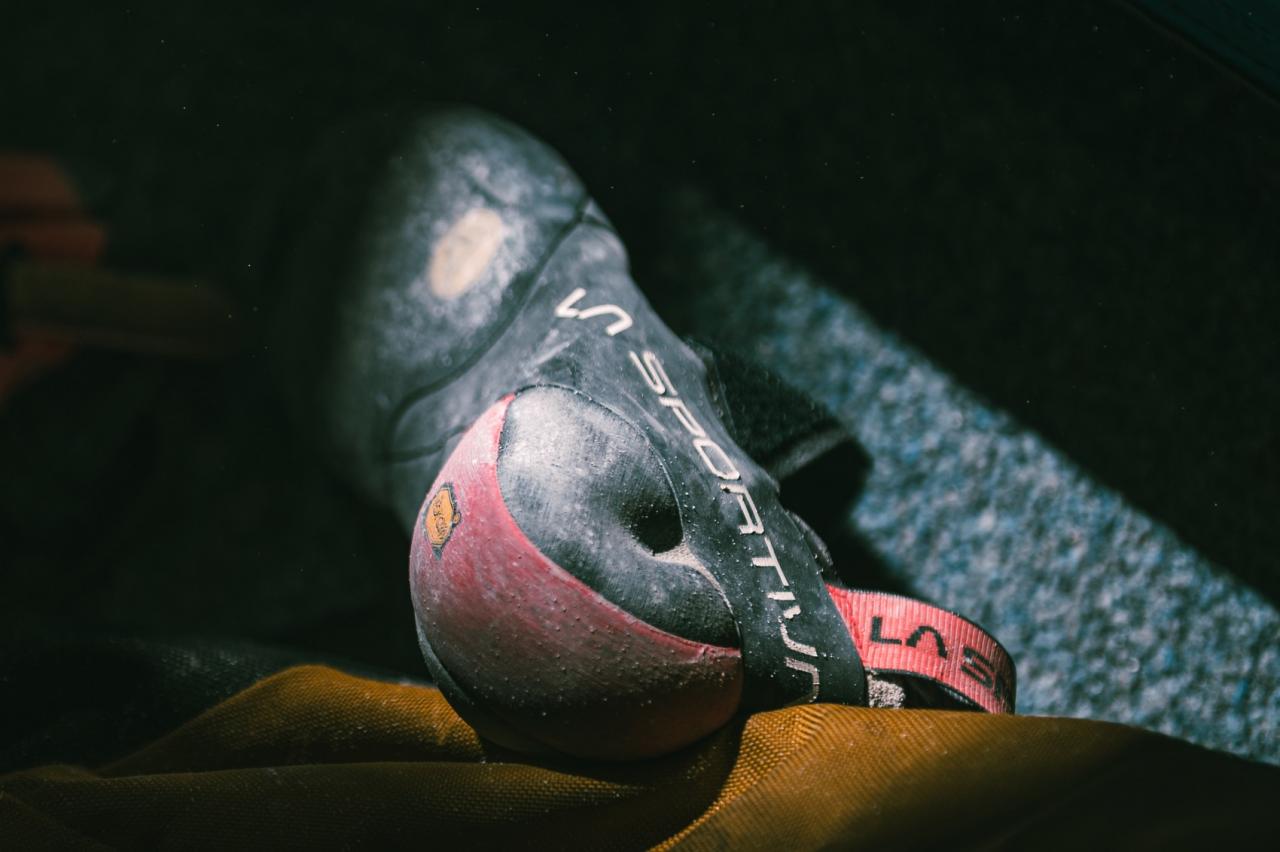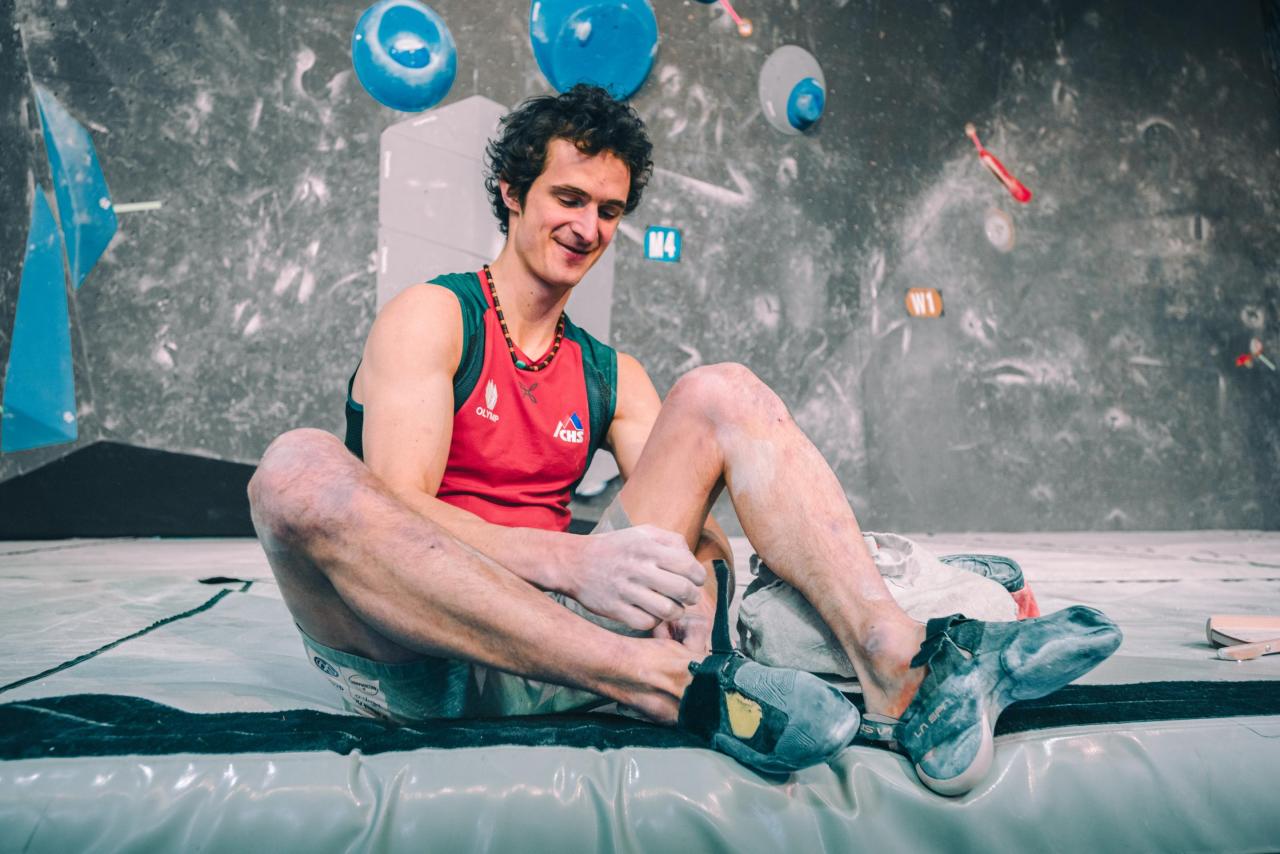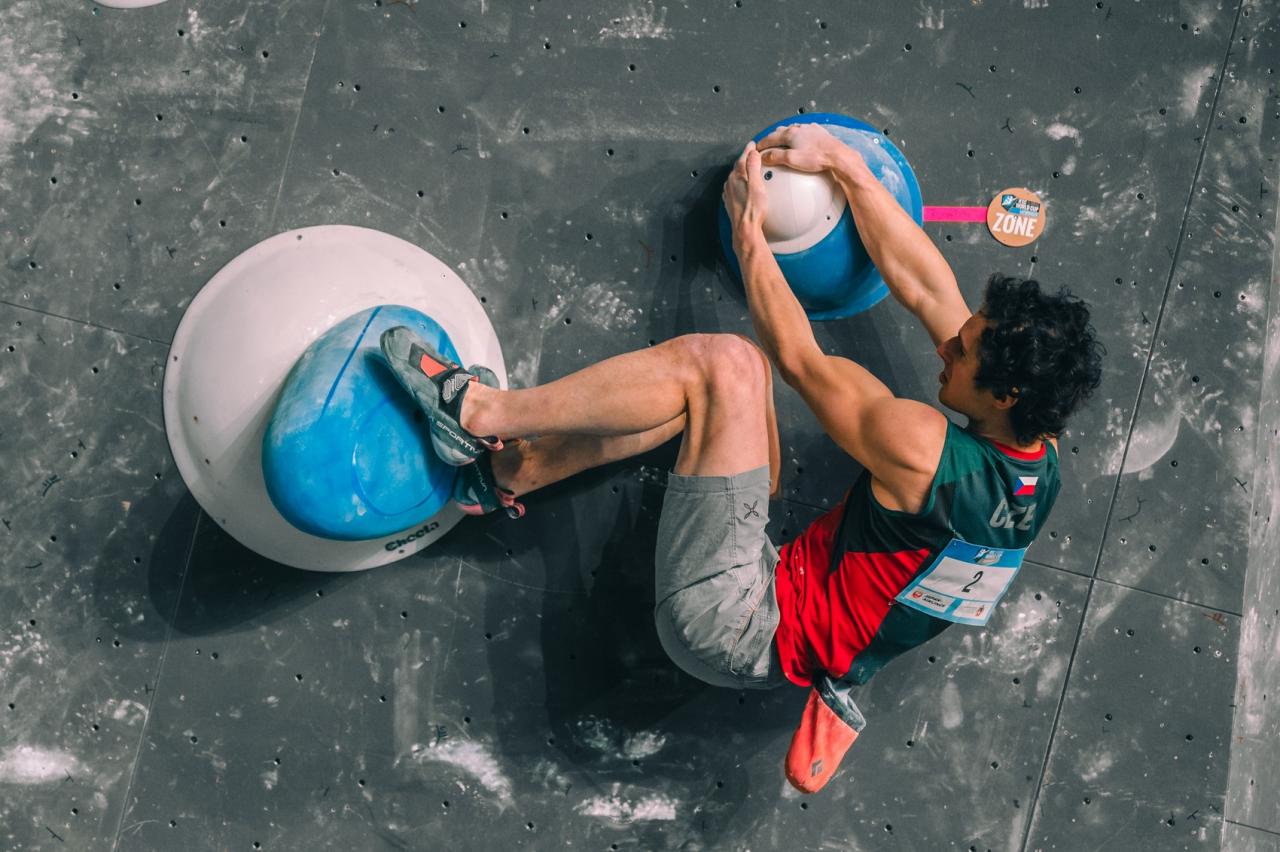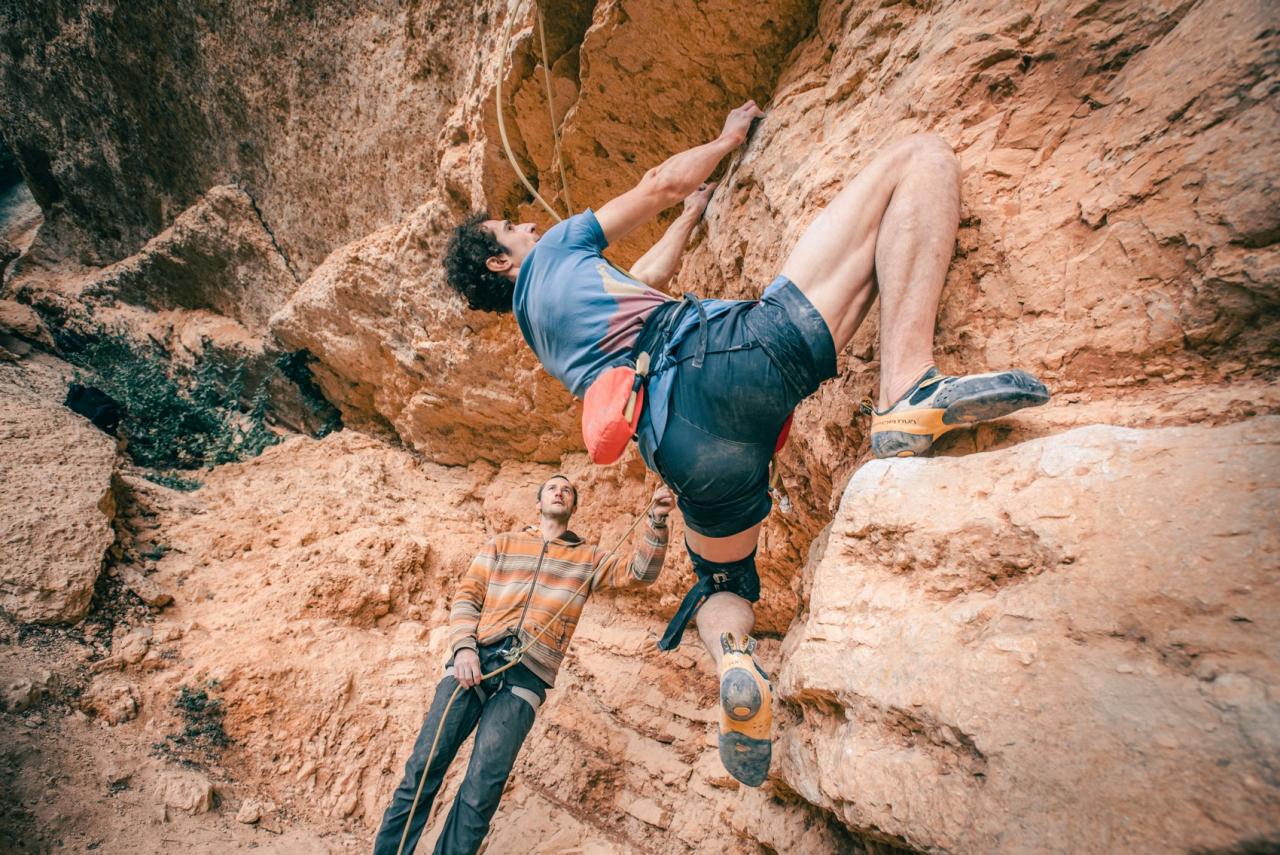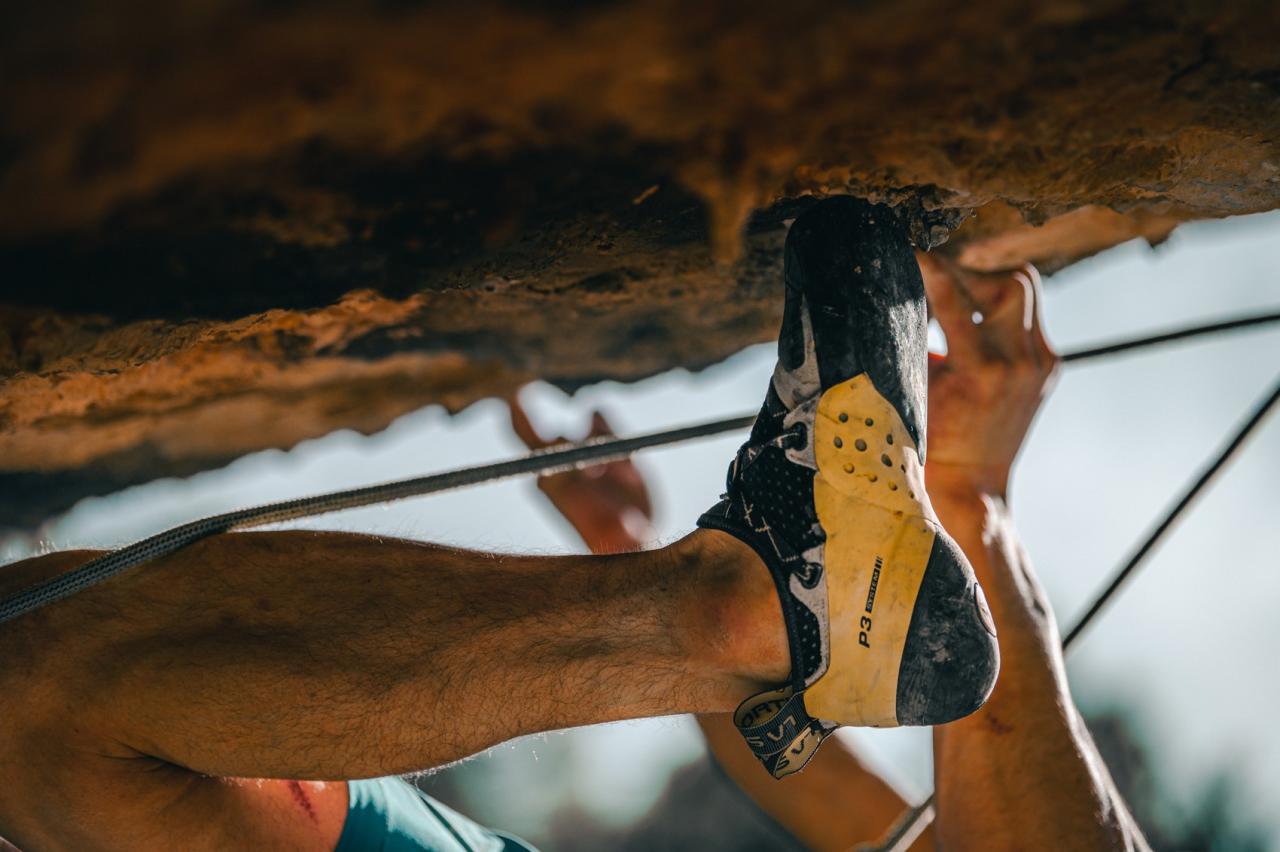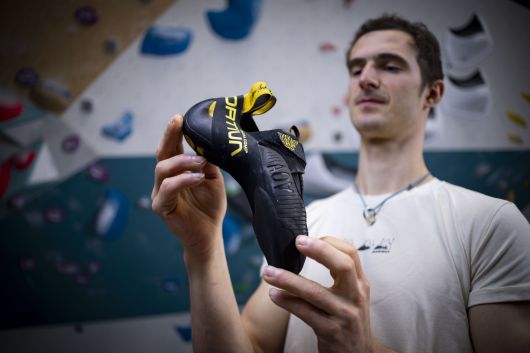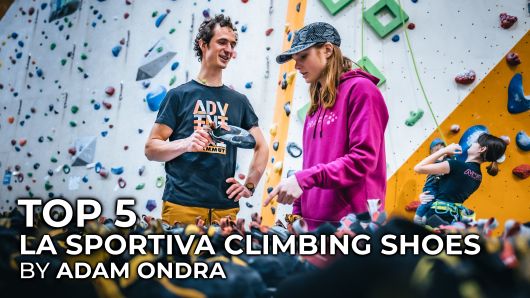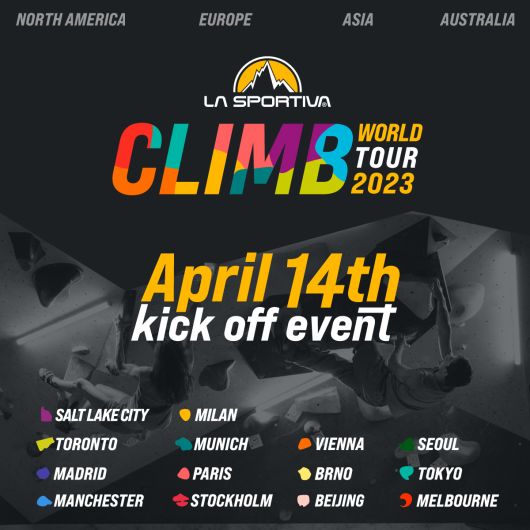If you think about all the old-school crags from the '80s like Buoux, Verdon, or the vertical routes in Arco, the majority of the climbers would agree that the grades are hard. Some would say they are brutally sandbagged. In a way, one can expect it. Over the years, with the development of climbing gyms and better access to physical training, it is so much easier to get strong. And this strength can help you immensely in the overhangs. Back in the ’80s, climbing gyms were non-existent, and most of the climbers would either make pull-ups or traverses on brick or concrete walls. Most of the sport climbing crags were vertical or slabby, with very tiny holds and footholds where the power in your biceps and core is not very useful. If you were a star of climbing in the ’80s, you were probably a master of climbing technical faces on tiny holds. That was the style that you had the most possibilities of practising, given that climbing gyms did not exist, and the overhanging routes were very rare.
The overhangs grading scale question
I am not sure why there was no more attraction towards putting up more routes in the overhangs before. I suggest that the rock tends to be more solid and clean in the vertical walls. The running water cleans up the wall and sweeps away everything loose. There were still many routes in the ’80s that were opened ground up, with strong ethics against bolting from the rappel. If you tend to open the routes in this style, you better choose a wall of bullet-proof rock rather than a chossy overhang that needs a lot of cleaning before you can climb it.
Once these climbers adapted to pulling onto the smallest holds possible in the vertical walls, started tackling the steeper walls. They started grading these overhangs based on the amount of effort they subjectively felt. If you climb your whole life in the vertical face, and then you get to try something steep, it is not that surprising it feels hard. On the other hand, once a modern climber who is used to climbing in the gym and steep terrain tries out a vertical crimpy wall, it will inevitably feel super hard for the grade.
We might discuss whether the grading scale is correct. From my experience, a steep route of a certain grade from 30 years ago feels very similar to a steep modern route of the same grade. But a vertical route from 30 years ago often feels sandbagged compared to a vertical route which was put up recently. It is quite rare that some of these old-school routes get upgraded. I do not want to suggest that we should re-grade (upgrade) basically all the routes in places like Buoux, but I want to suggest there might be one more reason why these routes feel so freaking hard.
Climbing shoe evolution since the ’80s
Climbing shoes have evolved immensely over the last few decades. The first climbing shoes in the ’80s looked all very similar. They were high (above the ankle), super stiff, and once you got used to using them, they were quite good for edging on the small footholds. They were pretty good for crack climbing too. On the sandstone or many limestone places, it might be true that you perform better with softer shoes, even on the vertical walls, because you want to “feel” those footholds. But for the sheer granite walls, like in Yosemite, where there is nothing but razor blades for your feet, the best climbing shoe you can bring today are TC Pros or Katana laces, whose concept is actually not that far away from those stiff climbing shoes in the ’80s. I mean, I do not say I would climb the Dawn Wall with 35-years-old climbing shoes, but I might stand a small chance. For steep overhanging routes with lots of heel hooks and toe hooks, I would probably rather climb barefoot.
At the end of the ’80s and the beginning of the ’90s, there was a broader choice on the market of climbing shoes. Shoes were not high anymore, and softer shoes appeared. Especially in the overhanging routes that were bolted more often (often with the help of artificial holds), the feeling of your toes would become more and more important. But it still took quite a lot of time to develop a shoe that would be good for hooking (heel and toe hooking). I would say that in the mid-’90s when steep climbing was already more popular, the climbing style was still conservative. It was pretty difficult to trust heel hooks or toe hooks, so climbers would rather do drop knees to lower the load of their arms in the steep terrain. I believe that the first shoe with an excellent heel hook from today’s perspective was Miura in 1997. I still know people that always have a pair of Miura in their backpack in case they need to make a very sketchy heel hook. Having climbing shoes that were really good for heel hooking, it was easier to adapt this technique into your climbing style. But at the same time, I must undermine the importance of modern holds and volumes in the gym. Having all the big volumes and features on the wall, it is inevitable that there will always be a lot of potential for heel hooks. Once you have the possibility to climb a lot in the gym with good climbing shoes, you will end up using much more heel hooks, even on the rock.
La Sportiva and down-turn shape of climbing shoes
Another revolution for steep stuff is the down-turn shape of climbing shoes. La Sportiva came with Mirage at the end of the ’90s - first aggressively down-turn climbing shoes, then Testarossa in early 2000, and finally Solution in 2007. A Down-turn shape can be pretty useful in vertical faces as well. It gets really crucial in the steeper terrain having small incut-footholds as it enables you to use your toes as a claw. In my opinion, Solution was their first climbing shoe that offered a “full package” for a modern climber. Very aggressive down-turn shape and high sensibility (even though they are considered pretty stiff today in 2021 - I thought they were such a softback in 2007), rubber on the top for better toe hooking (and no laces - they are bad for toe hooking), and rigid and performing heel (even though the heel is controversial - some love it, others hate it). All the other shoes had some sort of a problem - they were either too stiff, bad heel hook, or hopeless for toe hooking. The solution was and still is the king. Recently, it is more and more frequent to see climbers using softer shoes like Theory. The pattern is the same as Solution - down-turn shape, rubber on toe hook, and performing heel. But compared to Solutions, they are way softer, which means the sensibility is higher. That is also influenced by the development of climbing in the gym and the fashion of smearing on the volumes where rigid shoes just do not work.
Are modern climbing shoes an indisputable advantage?
How much better do we climb nowadays, and how much do we owe the progression of the climbing shoes? In the steep terrain, I believe the progression of the climbing shoes was very important, in crack climbing and technical face climbing significantly less. It is not true that if any rock star from the ’80s had been given modern shoes, they would have climbed steep 9b straight away as it takes time to get used to new techniques like heel hooking or trusting the soft downturn shoes. But having modern climbing shoes helps a ton while using them and exploiting their potential.
